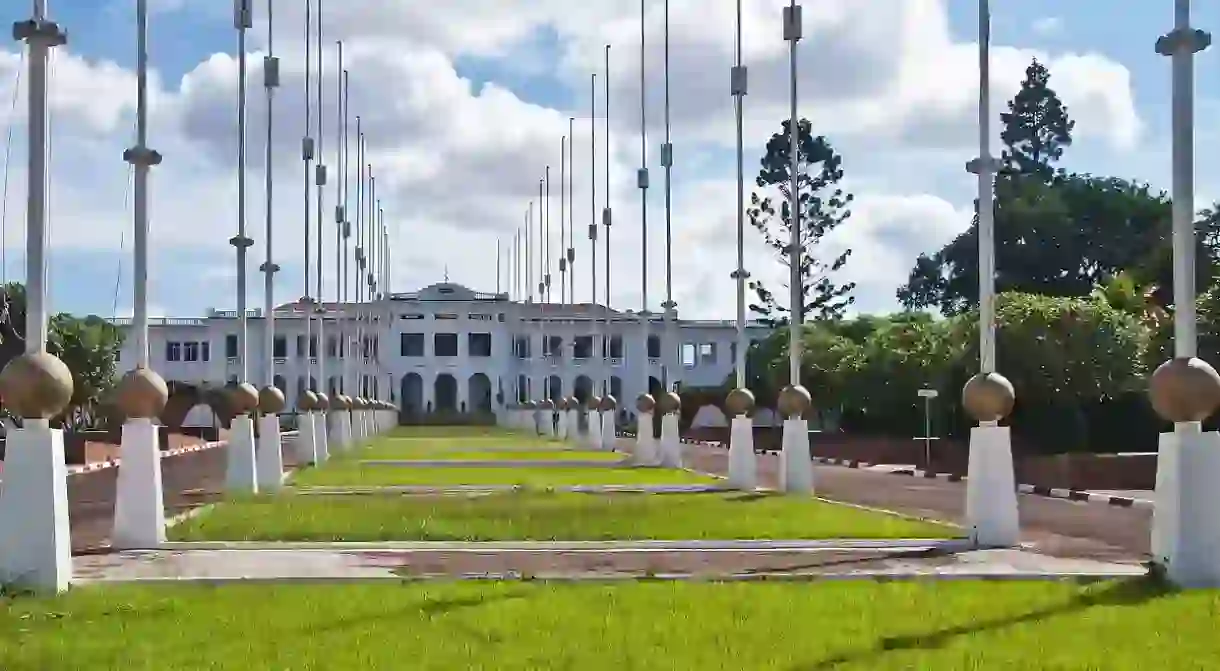10 of Cameroon’s Top Museums

Most museums in Cameroon are permanent exhibitions of traditional artefacts that tell stories and display the cultural identity of the country’s 250-plus tribes. The Grasslands in the west of the country, with their tradition of talented craftspeople, dominate these collections, but there’s a lot more here that’ll fascinate you. From secret messages passed on by ancestors to modern tools of expression, let’s take a look at Cameroon’s top ten museums.
doual’art
Art Gallery, Museum

doual’art is a social lab that supports artists in researching and creating works around urban African life. This project operates from Cameroon’s economic capital, Douala, and has been running since 1991. In addition to its exhibitions, it organises workshops and art residences.
Bandjoun Station
Museum
Bandjoun Station is an ambitious project founded by Cameroonian painter Barthélémy Toguo. From international arts collaborations to agricultural ventures, this one-of-kind museum is definitely a unique experience. Its location along the Bamenda-Bafoussam-Yaoundé highway makes it an easy visit for people travelling between these towns.
The Babungo Museum
Art Gallery, Museum

The rulers of the Babungo Kingdom in the Northwest Region of Cameroon have always been gifted sculptors who’ve recorded their history through art. The bronze statues are said to be among the best in the Grasslands. Plastic art has also been introduced into the collection.
Benedictine Museum of Mont Febe
Museum, Monastery
As you climb the hill it’s located on, this museum won’t be the only thing you’ll enjoy. You’ll also go past many foreign embassies and the presidency. Inside the museum, art, sculpture and cultural and historical objects from around Cameroon have been collected for decades. The monastery also runs a small hotel, and just below is one of Cameroon’s most famous hotels, the Mont Febe. You’ll love the view of the capital you get on your way out.
Mankon Palace And Museum
Museum

Close to 200 objects are displayed at the Mankon Museum, which is found inside the Fon’s Palace. The palace also promotes art and cultural exchanges. Don’t miss the headgear, among them the Fon’s German helmet and armour.
Baham Museum
Museum
Maybe if you listen carefully you’ll hear messages from the ancestors of the Baham people through the art they created. These messages are said to have a bearing on the future. The objects show their history, secret societies, religion, rulers, their use of textiles and various aspects of their social life.
Foumban Royal Museum
Museum

The new Foumban Royal Museum announces its impressive history from a distance: it’s built in the shape of its symbolic two-headed snake with a giant spider over it. Visitors can trace the history of this kingdom through the eyes of its philosopher king, who created his own alphabet and started a religion that brought together aspects of Islam, Christianity and Animism. Foumban is one of the oldest cities in Cameroon. You won’t be going back with any of the 12,500 pieces of art, but you can buy artefacts to take home with you along the street.
Douala Maritime Museum
Museum
The Douala Maritime Museum exhibits photos, sculptures, maps, paintings, videos, documents, archives and multimedia animations. Exhibitions from Cameroon’s port cities of Limbe, Douala and Kribi helps visitors understand how the country has been shaped by shipping. The museum has a navigation simulator that will be fascinating for navy students and professionals.
Musée Des Civilisations de Dschang
Museum

This museum is a collection of art that helps us understand traditional Cameroonian societies. Its exhibition displays art from kings that are judged to have possessed great knowledge, held great power and presided over culturally rich societies. The colourful building is home to over 356 Bamilike artefacts and hosts concerts and cultural exchanges.
The National Museum, Yaoundé
Museum

This beautiful villa with a lavish yard is Cameroon’s former presidential palace. It is located at the centre of the capital and is easy to access from most places in town. The collection of art, handcrafted tools, masks, accessories, tribal objects, instruments and paintings come from all over the country, and it has some of Cameroon’s best bronze and wood statues.













